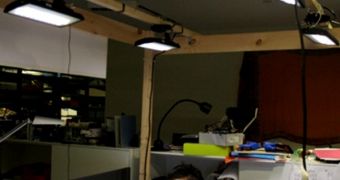Engineers at the Massachusetts Institute of Technology (MIT) are currently working on a new device that would essentially put the power to control light at home and at work back into the hands of people, stripping computers of their control.
The research was prompted by soaring electricity bills, and by various shortcomings associated with having automated lighting systems. Motion detection-based lights, for example, can go out if you stand still.
Many companies use lights that go off when people leave a room, and turn on when they detect motion. Others have light controls that are very complex, featuring a large number of buttons and sliders.
In fact, you would be hard-pressed to find a conventional light switch in most state-of-the-art buildings, even if installing them could cut electricity bills by nearly 50 percent, according to calculations done by the MIT team.
Members of the Responsive Environments Group at the Institute, led by Media Lab associate professor Joseph Paradiso, say that they are now working on experimental control devices that could provide light and save energy.
Research associate Matthew Aldrich, the leader of the actual experiments, says that the new devices are as small as a business card, and also very thin. This means that they can easily fit in a pocket, or even on a crowded desk.
One of their main functions would be to analyze the amount of light reaching the actual workspace. They can do so via integrated light sensors, which allow the devices to determine how much more light is needed for optimum levels.
The apparatus will also feature controls that will allow the user to select the intensity and color balance of the light reaching their individual workspaces. In order to enable this level of control, MIT experts are not using conventional lights, but rather arrays of light-emitting diodes (LED).
The team says that the devices are also capable of measuring how much light comes in from the windows or from neighboring work spaces, and compensate the light coming from ceiling fixtures accordingly.
This system provides the “possibility of much higher energy saving than can be obtained through LED lighting without intelligent control systems,” says Rensselaer Polytechnic Institute (RPI) expert Bob Karlicek.
He holds an appointment as the director of the Smart Lighting Engineering Research Center at the Institute. However, the scientist adds that implementing such a system is another matter entirely.
“There are still significant technical barriers that need to be overcome on at least three fronts: higher efficiency color adjustable LED lighting, new types of lighting sensors that can be used to control lighting systems, and new ways for people to interface with adaptive lighting control systems for maximum productivity and comfort,” he concludes.

 14 DAY TRIAL //
14 DAY TRIAL //